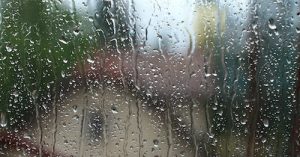Inspecting Your Home After a Summer Storm
August 8th, 2016 | Posted in Home Repairs, Safety It’s that time of year again. Thunderstorms, high winds, heavy rain and hail can play havoc on your home. Here are a few key items to inspect after the storm.
It’s that time of year again. Thunderstorms, high winds, heavy rain and hail can play havoc on your home. Here are a few key items to inspect after the storm.
Roof, Siding and Exterior
If you experience a hail storm it is critical to inspect your roof, siding and exterior for damage. Hail can rip through shingles and make holes in roof flashing. This damage can lead to roof leaks. Walking on your roof can be extremely dangerous–call a professional roofer to do the inspection. Damage can also occur to siding, windows, doors and exterior trim. These can be dents which are usually cosmetic or could be holes which can lead to water intrusion in the walls. The entire exterior of the home should be inspected and damages items replaced if more than cosmetically damaged.
Strong winds can lead to shingles, siding, flashing and gutters being blown loose or off completely. Do an inspection after the storm and make repairs quickly before subsequent storms cause water damage. Inspect all overhead electric, phone and cable TV lines for tree branch damage and hazards. NEVER go near any fallen electric lines. This can lead to electrocution. Call your local utility for repairs.
Windows and Doors
Heavy, wind driven rain storms can lead to water penetration. After a severe storm, you should inspect all windows and doors and the walls around them for signs of water intrusion. Window and door weather stripping wears out over time and may not be sealing the water out. Also casement windows, for example, need periodic hinge adjustments to ensure a complete closure against the window frame. In addition to window and door areas you should inspect ceilings and walls for signs of water intrusion. Heavy rains during a strong storm will typically be the first time a roof or flashing leak materializes. A small leak may not have visible signs in minor storms but evidence of water can usually be found after a long, heavy rain.
Sump Pump
If your home has a sump pump in the basement you should be inspecting it monthly. During or right after a storm you should inspect it to make sure it is functioning properly. Make sure there are not any objects in the crock that could bind up the pump. Make sure the pump is not rusty. I highly recommend investing in a battery or water-pressure back up system for your sump pump. Call a reputable plumber to have it installed correctly.
By investing a little bit of time and following these tips you can address storm damage quickly and avoid more costly long-term damage.

